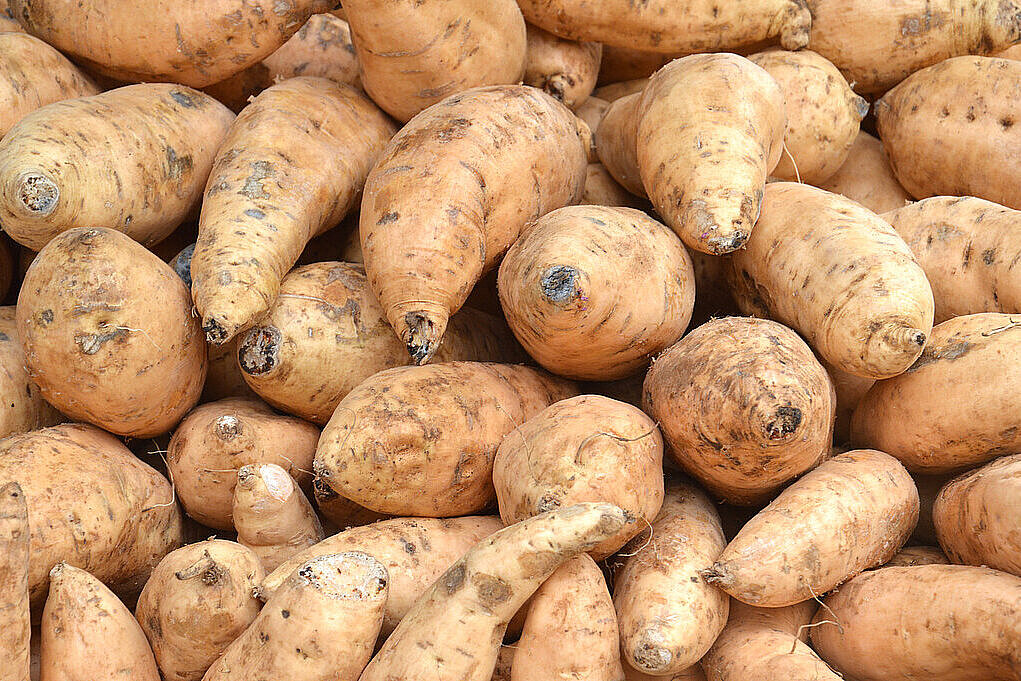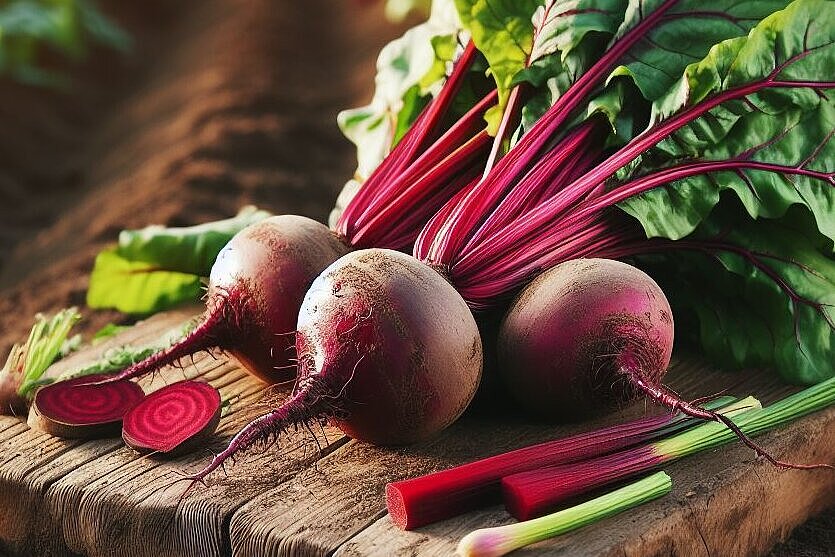Tuberous pea

Tuberous pea, also known as broad bean or tiger bean, is a plant from the legume family. It is mainly grown in Africa and southern Europe and has edible tubers that taste like nuts. Tuberous pea is rich in fiber, minerals, vitamins and antioxidants and can therefore have many health benefits for your dog. But is it safe and how can you feed it to your four-legged friend? In this article, you'll find out everything you need to know about tuber peas.
What is tuberous pea?
Tuberous pea is a herbaceous plant that grows up to 60 cm high. It has green leaves, yellow flowers and underground tubers that look like small potatoes. The tubers are the edible part of the plant and are usually dried and ground into a flour. The flour has a sweet taste and can be used for baking or added to muesli or yogurt. Tuber pea is gluten-free, lactose-free and vegan and is therefore also suitable for dogs with allergies or intolerances.
What are the benefits of tuber pea for dogs?
Tuber peas have many positive properties for your dog's health. Here are some of them:
- It aids digestion as it is high in fiber, which stimulates the intestines and improves fecal consistency.
- It strengthens the immune system as it contains many antioxidants such as vitamin C, E and polyphenols, which fight free radicals and inhibit inflammation.
- It supports skin and coat health as it contains essential fatty acids such as omega-3 and omega-6, which ensure smooth skin and a shiny coat.
- It regulates blood sugar levels as it has a low glycemic index and therefore causes blood sugar to rise slowly. This can be particularly beneficial for dogs with diabetes or who are overweight.
- It provides the dog with important nutrients such as iron, calcium, magnesium, zinc, copper and folic acid, which are required for various bodily functions.
Are there any disadvantages or risks associated with tuber pea?
Tuberous peas are generally well tolerated by dogs, but there are also some points you should be aware of:
- It can cause bloating as it contains a lot of indigestible carbohydrates that are fermented by bacteria in the gut. This can lead to gas and abdominal pain. To avoid this, you should only give your dog small amounts of tuber pea and increase this slowly.
- It can trigger allergies if your dog is sensitive to legumes. Even though tuber pea does not contain lectins, which are often responsible for allergies, it can still cause an allergic reaction. Therefore, watch out for possible symptoms such as itching, skin rash or breathing difficulties and consult a vet if in doubt.
- It can interact with medications if your dog is taking certain medications. For example, tuberous vetch can increase or decrease the effect of blood-thinning medication as it contains vitamin K. Therefore, talk to your vet about whether or not you can give your dog tuberous vetch.
How can you feed your dog tuber pea?
There are various ways in which you can offer your dog tuber peas. Here are some examples:
- You can use tuber pea flour as an ingredient in homemade dog cookies or cakes. However, make sure that you only use healthy ingredients and do not add any sugar or artificial additives.
- You can add tuber pea flour to your dog's normal food. Simply mix a teaspoon of flour into your dog's food and increase the amount as needed. However, make sure that you reduce the total amount of food accordingly to avoid overfeeding.
- You can use tuber pea flour as a reward for your dog. Sprinkle some flour over a piece of fruit or vegetable and offer it to your dog as a treat. This is a healthy and tasty alternative to conventional snacks.
Tuber pea is a nutritious and healthy ingredient for your dog that can have many health benefits. It is gluten-free, lactose-free and vegan and is therefore also suitable for dogs with allergies or intolerances. However, you should also be aware of possible disadvantages or risks, such as bloating, allergies or interactions with medication. To avoid this, you should only give your dog small amounts of tuber pea and increase this slowly.
If you notice any signs of hypersensitivity or poisoning in your dog, you should see your vet immediately. We are not a substitute for a vet, but we try to be as accurate as possible. Every dog reacts differently and we recommend you get a second opinion or consult your vet if in doubt.
Stay healthy and take good care of your four-legged friend!😊
Similar to Tuberous pea
Sweet potatoes are not potatoes, but tubers that belong to the bindweed family. They originally come from South America and are now grown in many tropical and subtropical regions. Sweet potatoes...
Yams (Dioscorea) are a genus of climbing plants that form starchy tubers. They belong to the yam family (Dioscoreaceae) and have nothing to do with sweet potatoes, with which they are often...
Beet, also known as beet or beetroot, is a plant from the foxtail family. It originates from the Mediterranean region and was already cultivated by the ancient Greeks and Romans. The spherical to...
Celery is a plant from the umbellifer family that occurs in various forms. The best known are white celery, celeriac and cut celery. Celery has long, green stalks with leaves that are often eaten as...



